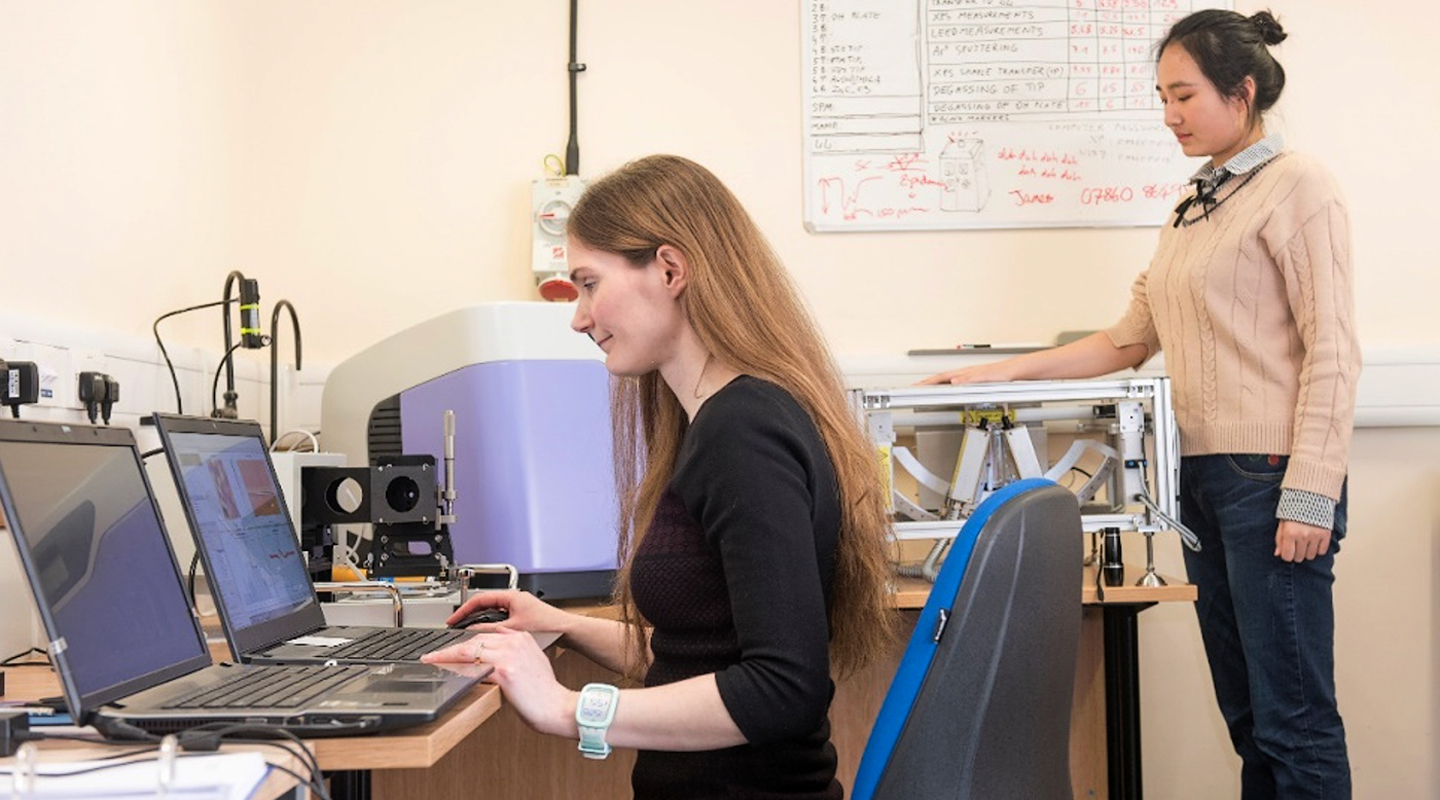Tuning in to Terahertz
Emma MacPherson develops easy screening for skin cancer

Thanks to the use of terahertz imaging, doctors may soon find a faster, safer and more efficient way of treating skin cancer. The use of the terahertz frequency can accurately assess whether a patch of skin is cancerous, and the extent of the damage, based on the work of CUHK medical physicist Prof. Emma MacPherson.
Professor MacPherson is a specialist in terahertz imaging, particularly the use of the terahertz (1012 Hz) frequency for biological screening. Her work on skin cancer stemmed out of her PhD thesis at Cambridge University, during which time she also worked as a research assistant at the Toshiba terahertz-imaging spinoff company TeraView.
Skin cancer is difficult to assess. A tiny mole on someone’s shoulder may be the tip of a tumour iceberg, with the cancer spread much farther than is visible. It is not uncommon for patients to present with a small mole on their face, only to have a palm-sized patch of skin removed.
Currently, doctors removing a surface-level tumour must effectively take multiple biopsies to ensure they have reached the margin of the cancer and removed it all. This time-consuming process extends the surgery so that a simple procedure can take three hours or more while the tests are run.
‘It’s incredible how much the tumour can invade under the skin without you seeing it,’ Professor MacPherson notes. ‘It would save an awful lot of a surgeon’s time if we can use this technology to map the full extent of the tumour under the skin, and take it all out.’
By mapping the cancer beforehand, surgeons could also prepare appropriate skin grafts, and warn the patient of the likely extent and result of any surgery.
Terahertz imaging is very sensitive to water concentrations. By measuring the amount of hydrogen bonds in the protein of the skin, the system can assess the structure of that skin.
The terahertz spectrum is more than a million times lower in energy than an X-ray. As a result, it does not ionize molecules, and is much safer, notes Professor MacPherson, an associate professor in CUHK’s Department of Electronic Engineering. Multiple fast screening tests would be possible.

Professor MacPherson has a concurrent post at the University of Warwick in Britain. She returns regularly to Hong Kong to supervise her lab at CUHK. Between CUHK and Warwick, she leads a terahertz study group that includes six PhD students and three post-doctoral researchers.
Professor MacPherson is also working with University Hospital Coventry at Warwick to start testing the imaging in the clinic with patients. But those efforts have been hampered by the coronavirus pandemic.
The terahertz information could also be used for other skin treatments. For instance, people with dry skin conditions such as eczema may respond differently to different moisturizers. The system can detect how well they react to a particular one, so dermatologists can recommend it.
Currently, skin doctors effectively use trial and error. Patients try one moisturizer, and move on if that doesn’t work.
‘If I can quantitatively say this person has such and such skin, we could really speed up treatment for skin conditions,’ Professor MacPherson says. Serious eczema can lead to very cracked and painful skin.
Professor MacPherson’s system emits lower background radiation than is emitted by a human body. The terahertz waves are created by shining a pulsed laser at gallium arsenide, which when excited emits the right frequency.
‘A lot of physics went into finding the materials to generate terahertz nicely,’ Professor MacPherson explains. The gallium arsenide can emit anything from 1 to 5 terahertz at the same time.
The laser itself is rather expensive. The system looks like a large box, with a large screen on which the biological sample can rest for screening.
Terahertz imaging is used for a variety of functions already. It is most advanced in the pharmaceuticals industry, where it is used for quality control in the production of pills, since it can ensure each tablet has the right consistency.
It is also literally used for watching paint dry. Car manufacturers must apply many layers of paint to a car. The terahertz system can check whether the paint has dried without touching or damaging the paint, if the probe is held at the right distance from the car.
Professor MacPherson has always wanted to work in medical science. ‘We are doing something like they’d do with car paint, but on skin,’ she explains. ‘Even a person’s skin changes throughout the day based on what they’ve eaten and drunk.’
Water is constantly evaporating out of the skin. Skin cancer can be detected by its different hydration profile. A tumour will typically emit more water, since there is an increased blood supply flowing to the overly active cells of the cancer.
At the very least, the imaging system would reveal that something unusual is going on if there is a patch of skin showing a different kind of water circulation from the rest of the skin.

Professor MacPherson hopes to have the system into the hospital and be testing on live patients next year. The in vivo evidence will be invaluable. The Hong Kong team in particular are also working to speed up the system, with it already working in real time at 7 frames per second, which is similar to an ultrasound. But the aim is to hit the 10 frames per second of video.
After pilot studies, the system would go into clinical trials. Realistically, that may mean the system is 5 to 10 years away from widespread commercial use in hospitals.
There are between 2 million and 3 million non-melanoma skin cancers occurring globally each year, according to the World Health Organization, and 132,000 melanoma skin cancers.
Eventually, Professor MacPherson hopes to have a plugin terahertz device for a mobile phone that could scan your skin so you can run the test at home. There are already such plugin probes that can conduct ultrasounds.
‘That’s my ultimate goal, so that people would check their own moles reliably, or in a GP setting run a very easy check,’ Professor MacPherson says. ‘I really think it’ll be a big change.’
By Alex Frew McMillan
This article was originally published on CUHK Homepage in Oct 2020.

